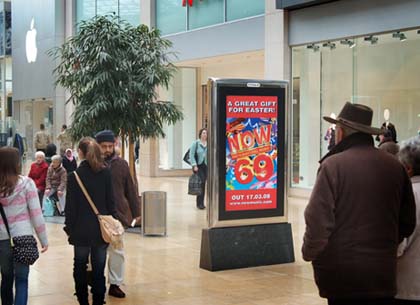DOOH – Successfully Engaging Audiences Out of Homes
By Scott Brown
People are increasingly spending more time outside their home than at home. Increased mobility of an audience is both a challenge and an opportunity for advertisers. People are short of time and there’s a surfeit of information whether they’re looking up, down, or straight ahead.
DOOH has emerged as a solution for businesses that wish to get the attention of a very mobile audience. Consumer awareness toward digital signage advertising is high. People engage with digital media when they work, travel, play, and relax. Our paths intersect digital signage locations multiple times in a day.
DOOH is the lynchpin than can integrate every type of advertising medium and reach out to the lives of people at different locations. The reach of videos and electronic images displayed on digital screens outside homes is immense and the message recall is high. The biggest advantage with DOOH messaging is that it makes people stop and watch. More than 6 out of 10 adults acknowledge that DOOH ads catch their attention. This “attention catching” figure is higher than what you get for billboards, magazines, TV ads, and other media channels. Digital signage is also more entertaining and informative than other media sources.
VODXS faucet ads placed in washrooms leverage the attention catching and educative aspects of DOOH. These intelligent ad networks work wonderfully to capture a viewer’s attention because of their placement. They are placed above faucets and with relevant messaging, it is more than an even bet that the viewer will be impressed by what he or she sees and will take the necessary action.
Studies show that while the average person sees digital signage at six different locations in a week, the college-going age group (18-24 years) report seeing DOOH ads and messages across eight locations.
DOOH has developed a reputation, backed by statistics, for being able to grab attention, engage, offer unique content, provide interesting information, and entertain.
DOOH enables advertisers to participate in the work and play routine of a target audience. Strategically placed DOOH media can intercept an individual or the masses as they step out of home to travel, wait in queues for a bus, travel in trains, shop at malls, visit restaurants, and play at casinos. Such interactions are contextually relevant. For example, DOOH kiosks and VODXS ads can cull information from smartphones via apps and NFC and present relevant messages. The introduction of context at such a granular level where you can address an individual based on gender, age, income, location, past actions, and such factors means that your chances of driving sales and converting leads are very high. Moreover, with DOOH the prime objective is to inform, form a community, and then take things forward towards a sale. DOOH is not about hard sell. It is essentially about timely messaging at the right location.
The USP with DOOH is that the content is unique. It stimulates the interest of a jaded audience. And since it can easily and quickly be altered to address the interests and profile of a viewer, your chances of a meaningful engagement culminating in a beneficial transaction for both parties is very high.
The communication with DOOH is quick and the messaging crisp. You can make a statement or initiate engagement through interactivity. In times when people face an information overload, it is a no mean feat for any medium if it can grab a viewer’s attention, particularly if the audience is mobile.
Traditional media is ceding space to digital media because people are beginning to mentally turn away from one-way communication as seen in TV ads and print ads. Interactive engagements are increasingly becoming the norm. With activities outside often involving waiting and dwell times, DOOH lets advertisers display messages that are of relevance to that given setting. It could be a new savings scheme displayed in a bank or at an ATM; a cheap automobile advertised at bus stands or a fuel-efficient one at gas stations.
DOOH messages involving promotional offers, contests, and relevant events evinced the maximum interest. Five out of ten respondent to a survey said that they were open to sending a text message to follow up on a DOOH message. The communication can be carried forward on social media as well. DOOH lets you create a tightly meshed marketing policy that can meld smoothly with traditional marketing.
Online purchases are a huge part of our lives. Information viewed on DOOH can be verified online and a purchase executed. You can direct people to discounted online purchases by letting them scan codes at a DOOH kiosk or VODXS display.
Digital signage is a precursor to action. It could be engagement on the spot or online, communication via email or phone, an immediate purchase if the DOOH display is near a point of purchase, or a recommendation that a viewer makes to family and friends.

